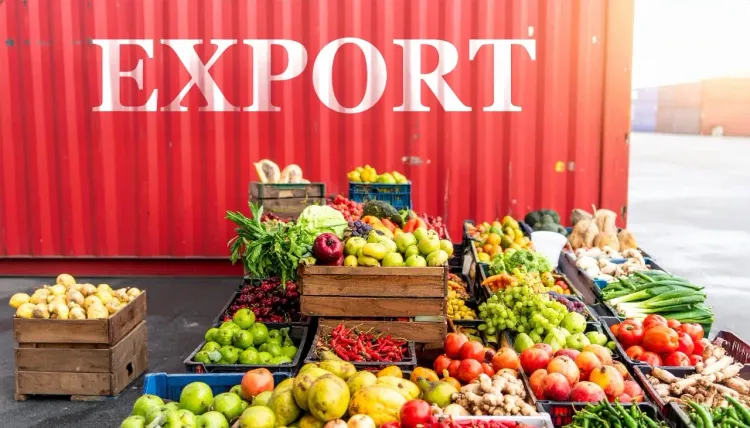How Did India’s Agricultural Exports Perform in Q1 FY26?

Synopsis
Key Takeaways
- 7% growth in agricultural exports for Q1 FY26
- Rice exports led with $2.9 billion
- India maintains 40% of global rice trade
- Buffalo meat and dairy exports increased by 17%
- APEDA's role is crucial in boosting exports
New Delhi, July 19 (NationPress) India's exports of agricultural and processed foods have commenced FY26 on a positive note, witnessing a 7 percent increase year-on-year, reaching $5.96 billion during the April–June quarter (Q1 FY26).
At the forefront of these agricultural exports continues to be rice. Shipments encompassing both non-basmati and basmati rice experienced a 3.5 percent rise, totaling $2.9 billion in Q1.
This uptick follows an impressive achievement in FY25, where rice exports hit a record $12.47 billion, marking a 20 percent boost from the previous fiscal year, according to official statistics.
For over a decade, India has retained its title as the world's leading rice exporter, commanding 40 percent of the global rice market, as per industry reports.
The recent growth can be attributed to the government's move to lift export restrictions, including the minimum export price, in late 2024, prompted by substantial stock levels and record harvests.
In Q1, exports of buffalo meat, dairy, and poultry soared by 17 percent, reaching $1.18 billion.
India now stands as the second-largest exporter of buffalo meat globally, with key markets including Saudi Arabia, the UAE, Vietnam, Malaysia, Egypt, and Iraq.
These exports are coordinated through certified integrated meat facilities, which undergo regular inspections by importing countries to ensure compliance with international standards, managed by APEDA.
Furthermore, exports of fruits and vegetables rose by 13 percent to $0.95 billion, highlighting the increasing global demand for Indian produce.
Products overseen by APEDA have significantly contributed to this export increase, with FY25 exports reaching $25.14 billion, a 12 percent increase from FY24. These products now represent 51 percent of India's total agricultural exports, with the remainder including marine products, tobacco, coffee, and tea.
Recently, Union Commerce Minister Piyush Goyal remarked that the agriculture sector has witnessed remarkable advancements due to favorable policies, financial incentives, low tariff barriers, and access to new markets via free trade agreements (FTAs) with developed nations such as Australia, the UAE, EFTA countries, and the UK.








